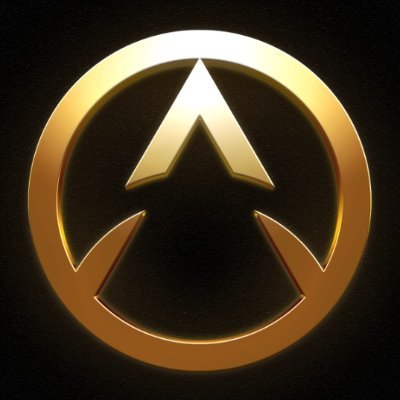Hedera price
in AEDAbout Hedera
Hedera’s price performance
Hedera in the news
Institutional accumulation drives HBAR above key technical levels as futures launch approaches.
Cronos (CRO) was also a top performer, rising 9.7% over the weekend.
Trading volume explodes 98% above average as institutional sellers drive Hedera token through critical technical barriers.
Hedera’s token slipped below key support levels as a late-session trading halt, collapsing volume, and failed recovery attempts point to mounting structural and liquidity stress.
Hedera's native token breaks key levels on elevated volume. Institutional distribution patterns intensify selling pressure.
Hedera's native token cracked key support levels on surging volume, forming double-bottom pattern before late-session stabilization attempts.
Hedera's native token retreats from $0.1817 to $0.1754 despite institutional accumulation.
Hedera's native token breaks key support in final trading hour as institutional focus shifts to regulatory-friendly blockchain alternatives.
Hedera (HBAR) was also among the top performers, gaining 9.9% over the weekend.
Hedera's native token shows range-bound trading with late-session recovery attempt before hitting resistance at key technical levels.
Hedera on socials
Guides

Hedera on OKX Learn
Hedera FAQ
Hedera and Bitcoin each have their own set of advantages and disadvantages. Hedera is much faster, with a transaction rate of over 10,000 per second. It is also less expensive than Bitcoin, with transactions costing $0.0001. The average Bitcoin blockchain transaction costs around $22 in comparison. Conversely, Bitcoin has a far larger user base than Hedera, and greater adoption is always advantageous to any cryptocurrency.
Hedera is not a blockchain. Instead, Hedera is built on distributed ledger technology, similar to blockchain in many ways. Hedera employs Hashgraph consensus, a graph-like structure in which all nodes communicate. This communication is then reported by constructing a graph of connections. Each connection contains a signature, a timestamp, a list of transactions, and two hashes, all of which can be used to validate a transaction.
Easily buy HBAR tokens on the OKX cryptocurrency platform. Available trading pairs in the OKX spot trading terminal include HBAR/USDT, HBAR/USDC, and HBAR/BTC. You can also swap your existing cryptocurrencies, including Bitcoin (BTC), Ethereum (ETH), Tether (USDT), and USD Coin (USDC), for HBAR with zero fees and no price slippage by using OKX Convert.
Dive deeper into Hedera
Hedera is a third-generation Proof of Stake (PoS) public network powered by the unique Hashgraph consensus. It is an open-source, publically distributed ledger that supports Solidity-based, Ethereum Virtual Machine-compatible smart contracts and native tokenization. Users can use Hedera's carbon-negative network to transact and deploy applications.
Hedera is owned and governed by the Hedera Global Governing Council, which comprises up to 39 diverse organizations. These companies include Chainlink Labs, DBS, Google, IBM, LG, Standard Bank, Ubisoft, University College London, and more. Hedera's governance framework ensures that no single entity has undue influence or control over the network or the Hedera price.
HBAR is Hedera's native cryptocurrency. The decentralized applications running on Hedera pay for network resources with HBAR. Through its PoS consensus mechanism, HBAR can also be staked to strengthen the network. Staking contributes to the network's security and integrity, and stakers are rewarded with a small percentage of transaction fees.
What is the Hashgraph consensus?
The Hashgraph consensus algorithm allows network users to agree on the order in which transactions occurred. Blocks in a blockchain are intended to form a single, long chain. If two blocks are created simultaneously, network nodes will eventually discard one to prevent the blockchain from forking into separate chains. With the Hashgraph consensus, every block is incorporated into the ledger, making them more efficient.
Furthermore, blockchains fail when new blocks arrive too quickly, requiring consensus mechanisms, such as Proof of Work (PoW), to slow growth. With Hashgraph, new transactions and blocks can be created as needed. Hashgraph also supports more powerful mathematical guarantees, such as Byzantine agreement, making this consensus faster and fairer.
The Hedera Hashgraph is more cost-effective and efficient than PoW alternatives because no time or energy is wasted mining blocks that will be discarded later. At the same time, since the Hashgraph is only limited by bandwidth, it is extremely fast. Hedera can potentially complete over 10,000 transactions per second with an average fee of $0.0001. Moreover, transactions are confirmed in less than five seconds, compared to 10 to 20 seconds on Ethereum and 10 to 60 minutes on Bitcoin. The energy used per transaction is also minimal at 0.00017kWh.
HBAR price and tokenomics
Following the launch of the Hedera network, a fixed total supply of 50 billion HBAR tokens was minted. The Hedera Council governed the allocation and distribution of these coins held in the Hedera Pre-Minted Treasury.
As of 2022, approximately 16 billion HBAR tokens remained in the treasury, with the remainder distributed as follows:
- Swirlds: Swirlds founded Hedera and licensed the Hashgraph technology to the network. Swirlds and its investors received 3.9 billion HBAR tokens.
- Founders and early executives: Around 6.9 billion HBAR tokens were distributed to Hedera co-founders and early senior executives.
- Employees and service providers: 7 billion HBAR tokens were reserved to attract, retain, and incentivize employees, advisors, and service providers. As of 2022, this group had received 2.2 billion HBAR tokens.
- Purchase agreements: 8.6 billion HBAR tokens were allocated to purchase agreements such as Simple Agreements for Future Tokens (SAFTs).
- Ecosystem development: HBAR tokens are actively used to fund Hedera's growth. The Hedera Council has set aside 11.9 billion HBAR for ecosystem development.
About the founders
Dr Leemon Baird and Mance Harmon founded Hedera in 2018. In 2015, Baird and Harmon developed Swirlds, a software platform for creating fully distributed applications to utilize the cloud without servers. Dr. Baird developed the Hashgraph consensus algorithm, which Swirlds licensed to Hedera shortly after the latter was founded. After co-founding Hedera, Baird, and Harmon served as CEO and Chief Scientist, respectively. However, in April 2022, the pair left these positions to become co-CEOs of Swirlds Labs, a newly established entity. The two are still Swirlds' representatives on the Hedera Governing Council.
Hedera highlights
Constellation ShortList™ for Blockchain Services
In August 2022, the Hedera network was added to the Constellation ShortListTM for Blockchain Services, demonstrating the protocol's popularity among industry experts.
Partnership with Arkhia
In September 2022, Hedera also announced a partnership with Arkhia, an Infrastructure-as-a-Service (IaaS) provider, to provide an enterprise-grade node service to Hedera, reducing friction and cognitive load on developers and contributing to Hedera's overall growth and adoption.
Disclaimer
OKX does not provide investment or asset recommendations. You should carefully consider whether trading or holding digital assets is suitable for you in light of your financial condition. Please consult your legal/tax/investment professional for questions about your specific circumstances. For further details, please refer to our Terms of Use and Risk Warning. By using the third-party website ("TPW"), you accept that any use of the TPW will be subject to and governed by the terms of the TPW. Unless expressly stated in writing, OKX and its affiliates (“OKX”) are not in any way associated with the owner or operator of the TPW. You agree that OKX is not responsible or liable for any loss, damage and any other consequences arising from your use of the TPW. Please be aware that using a TPW may result in a loss or diminution of your assets. Product may not be available in all jurisdictions.












































